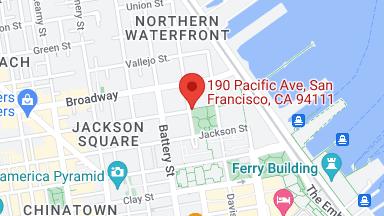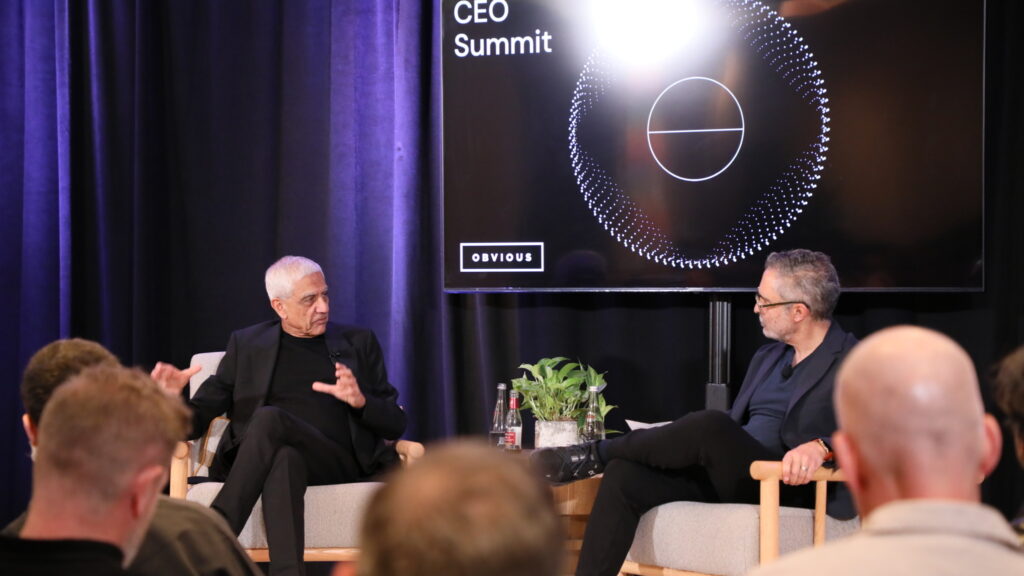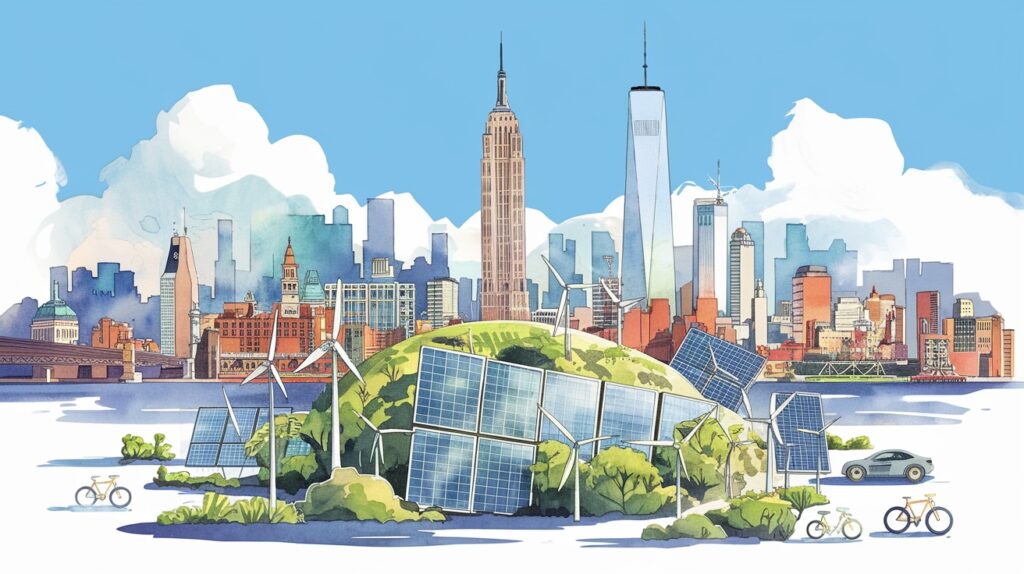Building Better Machines That Are Better for Humans
Obvious |
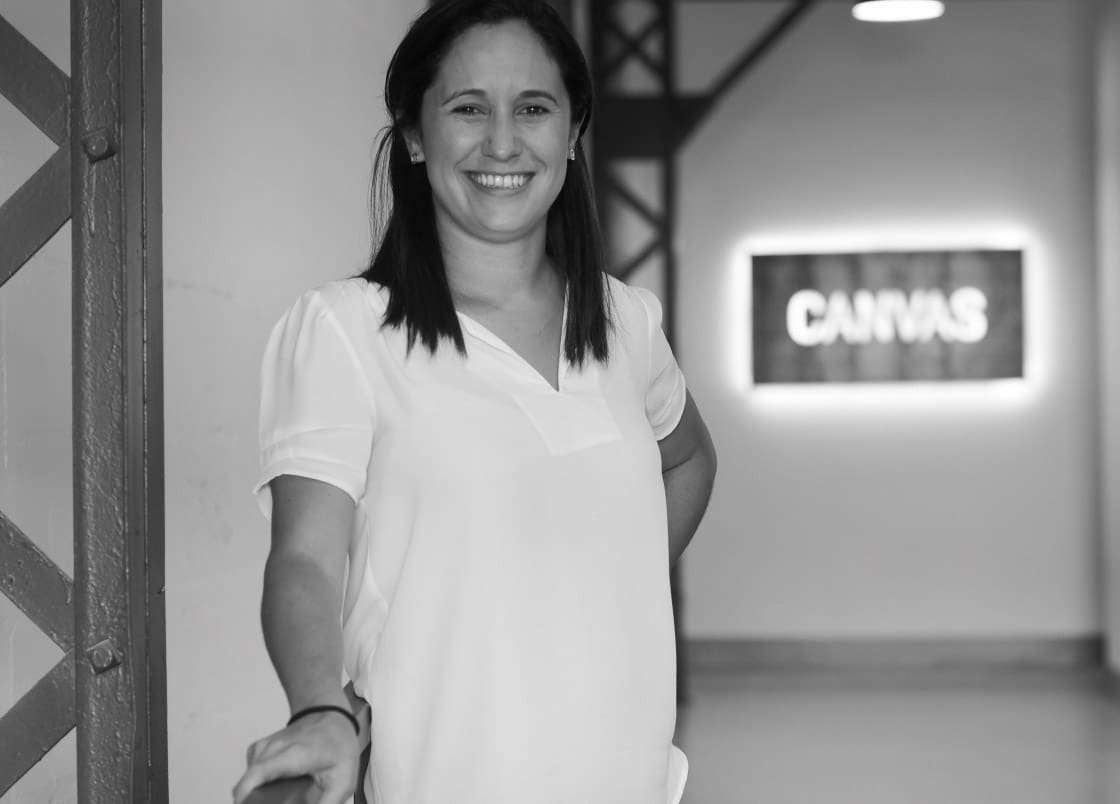
Canvas Co-Founder and CTO Maria Telleria brings her vision, values, and Ph.D. to bear on a construction industry in need of reinvention.
Maria Telleria became a sous chef at an early age. A sous chef for “fixing things” by her father’s side, to be more precise.
“I remember being up on the roof with my dad, fixing things. You get exposed to it all because things break.”
Her technology-obsessed grandfather truly primed the familial pump, having started a tooling company in Mexico where most of her relatives—“a family of engineers”—worked at some point. He managed a state-of-the-art facility, sourcing machinery from all over the world—Germany, the U.S., and elsewhere—so he could create the best tooling enterprise possible.
What she remembers most was how he operated the business. “It was cool, like a family-oriented way of working. He knew all the workers when he walked down the line, he knew the names of all their kids. It was the same people working [year after year], and they would remember us. Later in his life he hired a driver who [not long after] was working in the factory—that was a sign of how he helped people develop and made a space for them. From the outside, it looked like all his people were with him for a long time.”
“He showed me that you can run a successful business and still be personally involved in it.”
Mexico → Michigan → MIT
Maria grew up in Mexico until she was 14, when her immediate family moved about an hour north of Detroit to Lake Orion, Michigan, where her father sold tools for the auto industry. Being around factory plants while growing up deepened her interest in the field and commitment to be an engineer, while her sister—who now works in business and marketing—couldn’t have been less interested. “You either embrace it or don’t want to hear anything about it. [My sister] went the other way.”
While moving to the U.S. had its challenges—Maria had adjust to a new culture and went from a school with 60 students to one of 500—the upsides were evident, some fitting squarely within her interests.
“I had access to a full machine shop and one of the first robotics club in high school. I could go as far as I wanted in math—it was more tailored [than in Mexico]. My 14-year-old self might be having a different conversation [because at the time it was a bit of a shock], but looking back, it was great.”
The robotics club was the real gateway to her pursuit of mechanical engineering. The school group was as large as 30 at a given time (in addition to five engineers from Chrysler) working on air cylinders, door motors, and more. Because they had a shop, the students got to do their own fabrication, building a number of machines themselves and competing with teams all around the country. Her experience ranged from “the robot working perfectly” to “staying up all night trying to fix it.”
Once at MIT, Maria knew mechanical engineering was her calling even though it was initially a step back from the tangible into the theoretical. “As you’re learning, you’re was always thinking ‘How am I going to build all these things?’ Being exposed even a limited amount to building [in high school] was great preparation for my courses. With that real-world experience, I knew that everything that can go wrong will go wrong.”
Ultimately, she wanted to build things, and constantly questioned why difficult and often dangerous tasks were still being done by people.
“We still force the brunt of [physical] work onto humans. We need to create tools that use people’s ability to make decisions and instead let machines take the brunt. I wanted to build those for people.”
She stayed at MIT for a Ph.D., with her work focusing on centimeter-scale robotics (tools that can get into small places) and “no barcode” machines (inexpensive, low-energy use robotics feasible for one-time use). The DARPA-funded work was a collaboration between MIT and Boston Dynamics, which is where one of her future Canvas co-founders, Kevin Albert, was stationed. With a signature smile and laughing to herself, she reflects on their encounters:
“We knew each other on teleconference only, and that’s it. We didn’t meet [in person] until we were both in California, saw our names listed at a gathering, and realized we knew each other!”
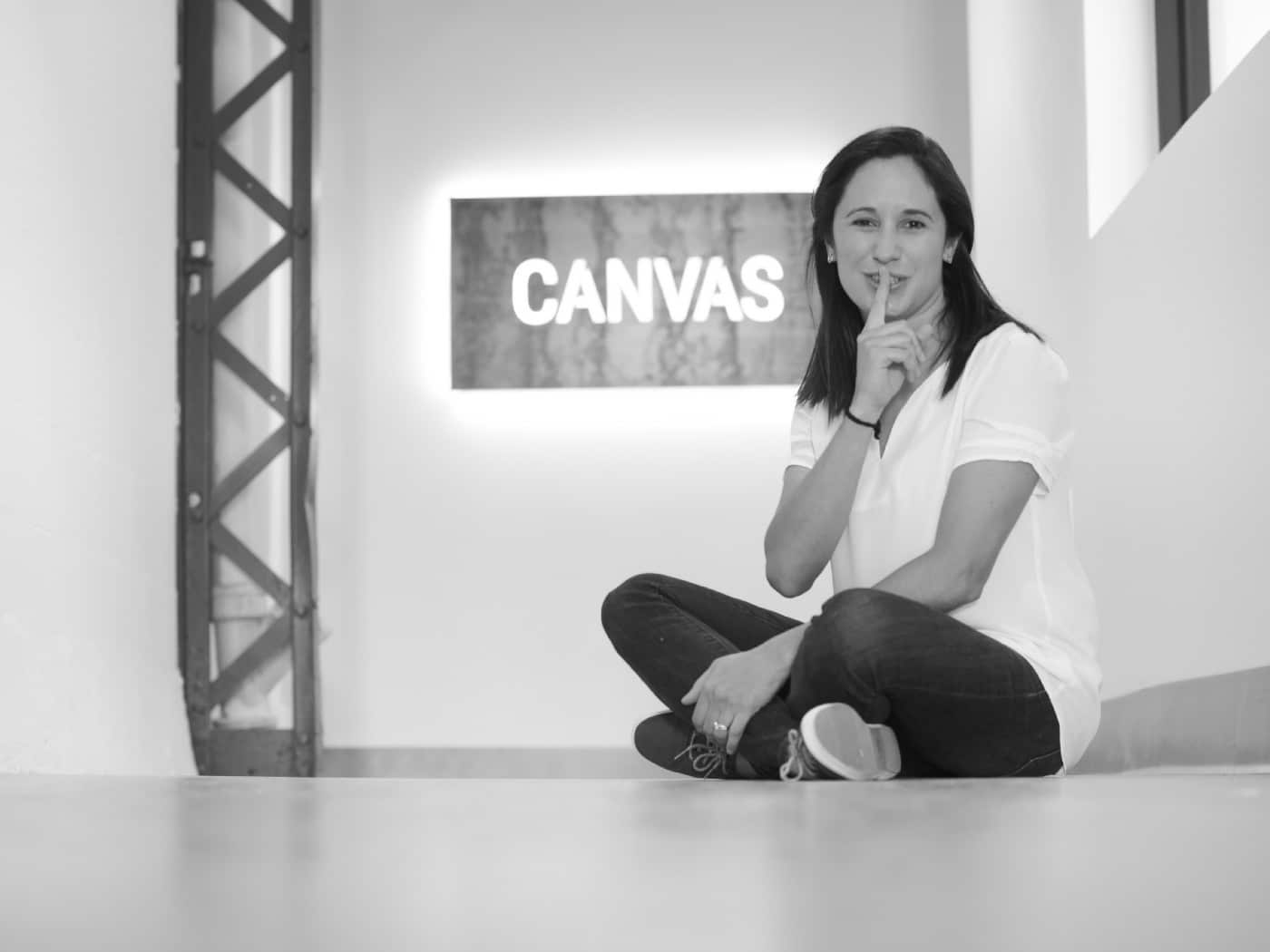
Opportunities in Unstructured Environments
In the short years after her degree, Maria partnered with Kevin on pneumatic robots. Where to deploy them with the most impact, however, remained open. “At the starting point, my mission was to get machines out into the field—wherever they’re needed. [Organizations like] the Office of Naval Research and NASA appealed to me.”
With a bigger question in mind—What happens if you don’t have the ability to control everything [in the environment] like they do in the automotive industry?—she and Kevin stepped back to consider the role that pneumatic robots could play in less-structured, more-challenging environments.
“We understood unstructured environments, and as we continued to explore, construction kept coming up.”
While the auto industry would have been an obvious choice, challenges and opportunities were more considerable elsewhere. As far as industries go, construction was simply massive—and surprisingly neglected by technological advancement. Declining productivity, rising costs, an aging workforce, dangerous conditions with increasing safety requirements, unstructured environments (“they move their office every month!”), and high volume? With few tools being developed to meaningfully address these challenges, robotics seemed a potential cure for what ailed the industry.
“Automation could bring a new view. Robotics is also great for something with volume, and the volume of construction goes up every year. Our learning about the space highlighted the need for it.”
The labor issue alone was worth considering: “Everything is booming except labor. Less than 5% of high school students want to go into construction. The idea of helping make this field more exciting is great [because] the way it’s headed is unsustainable.”
The move from idea to business took a mindshift. Maria and Kevin were building Canvas within Otherlab, and when deciding to spin out knew they had to unlearn the ways of the research lab and focus squarely on running a business.
“Just because it’s interesting doesn’t mean it’s a business. A big part of that was making sure we were thinking holistically—from the process to something that can work directly with construction workers.”
At Otherlab Maria and Kevin met Henrik Bennetsen, who at the time was working on behalf of all Otherlab projects, helping their engineers ask one key question: “Yes, but how do you make this into a business?” Henrik joined Maria and Kevin as their third co-founder and chief business officer in September 2016.
The Canvas team, now at 14, has fully spun out but remains closely connected. Representatives from Otherlab sit on their board, and Maria confesses that “we like to go back to all their parties—they have great parties!”
Valuing Stealth Mode While Valuing Values
When asked why Canvas has remained in stealth for so long—over two years—Maria didn’t hesitate:
“We need to focus on doing one thing really well. This has been the downfall of so many companies. We’ve found a task, and are making a tool to help workers be highly productive. For now, we don’t see too many benefits to talking openly. We’ve also been using that time to learn about the industry—going out into the field to learn, making sure we’re talking to the right people, and continuing to learn—instead of going out with a big splash.”
While the focus of their work within the construction industry remains under wraps, she is less reluctant to talk about their company values.
“We sat down and purposely wrote down our values when we were small, as the founders. A lot of our team members have been a part of us for years … and as things move ahead, the team can now have something to reference back to. [We] bring it up with each other and use them … when things are hectic, we look to the guidelines we set for ourselves. Trying to make your values in the midst of funding or tough decisions, you get influenced by other things. It was great we did it when we had a clear vision for the company.
These play an important role across the company as well. The values are outlined in their handbook, discussed in interviews with candidates, and re-evaluated every six months to determine if they’re still holding true. “We think of the values as a living document and find ways to keep them updated. They’re more than just words; they’re things that can be acted upon.”
With automation and job displacement as a critical issues in civil society, Maria and the team are channeling their values toward the heart of their work.
“The hope is that we create a tool that allows people to do this work with higher productivity, greater safety, and [enabling] a better standard of living. We’re giving them a tool—without them, it’s useless. [We’re looking at] the task as a whole and understanding the limits of automation. We just want to make people’s lives better.”
